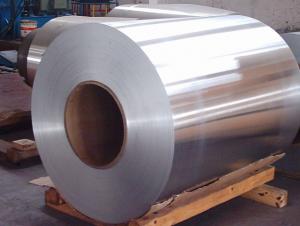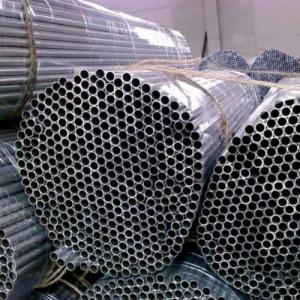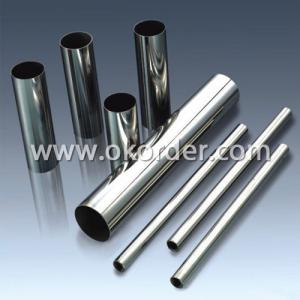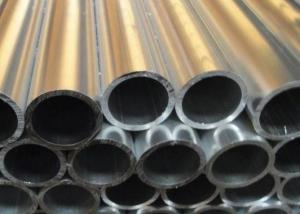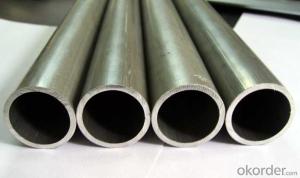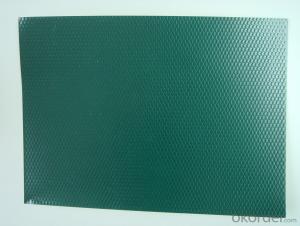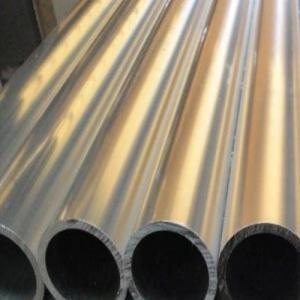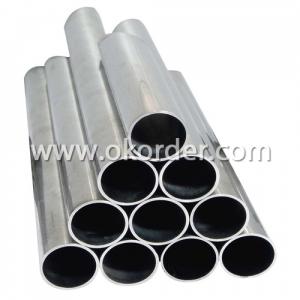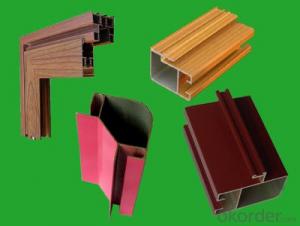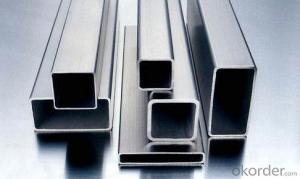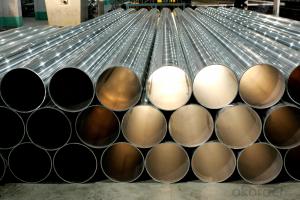Aluminum coil for any application
- Loading Port:
- China Main Port
- Payment Terms:
- TT OR LC
- Min Order Qty:
- -
- Supply Capability:
- -
OKorder Service Pledge
OKorder Financial Service
You Might Also Like
We provide a full range of precision aluminum for almost any application. We produce aluminum in a wide variety of alloys, including clad composites. Our aluminum can be produced in standard dimensions or custom made to your special requirements. We produce both imperial and metric units. We manufacture in compliance with the main international specifications, and tighter tolerances or custom tempers are available upon request. We offer various surface conditions, custom finishes (painting, anodizing, embossing), special processing, and multiple packaging options to meet our customer's unique requirements. The following is a summary of our capabilities.
Manufactured in compliance with the main international specifications and standards, including: Aluminum Association, ASTM, EN, and DIN.
We can also manufacture in compliance with other international standards including:ASME, SAE, AMS, AWS, FED, MIL, QQ, ISO, BS, AFNOR, JIS and GOST.
Manufactured in compliance with the main international specifications and standards.
Tighter tolerances are available upon request.
Aluminium (or aluminum; see spelling differences) is a chemical element in the boron group with symbol Al and atomic number 13. It is a silvery white, soft, ductile metal. Aluminium is the third most abundant element (after oxygen and silicon), and the most abundant metal in the Earth's crust. It makes up about 8% by weight of the Earth's solid surface. Aluminium metal is so chemically reactive that native specimens are rare and limited to extreme reducing environments. Instead, it is found combined in over 270 different minerals.The chief ore of aluminium is bauxite.
Aluminium is remarkable for the metal's low density and for its ability to resist corrosion due to the phenomenon of passivation. Structural components made from aluminium and its alloys are vital to the aerospace industry and are important in other areas of transportation and structural materials. The most useful compounds of aluminium, at least on a weight basis, are the oxides and sulfates.
Despite its prevalence in the environment, no known form of life uses aluminium salts metabolically. In keeping with its pervasiveness, aluminium is well tolerated by plants and animals. Owing to their prevalence, potential beneficial (or otherwise) biological roles of aluminium compounds are of continuing interest.
Aluminium alloys with a wide range of properties are used in engineering structures. Alloy systems are classified by a number system (ANSI) or by names indicating their main alloying constituents (DIN and ISO).
The strength and durability of aluminium alloys vary widely, not only as a result of the components of the specific alloy, but also as a result of heat treatments and manufacturing processes. A lack of knowledge of these aspects has from time to time led to improperly designed structures and gained aluminium a bad reputation.
One important structural limitation of aluminium alloys is their fatigue strength. Unlike steels, aluminium alloys have no well-defined fatigue limit, meaning that fatigue failure eventually occurs, under even very small cyclic loadings. This implies that engineers must assess these loads and design for a fixed life rather than an infinite life.
Another important property of aluminium alloys is their sensitivity to heat. Workshop procedures involving heating are complicated by the fact that aluminium, unlike steel, melts without first glowing red. Forming operations where a blow torch is used therefore require some expertise, since no visual signs reveal how close the material is to melting. Aluminium alloys, like all structural alloys, also are subject to internal stresses following heating operations such as welding and casting. The problem with aluminium alloys in this regard is their low melting point, which make them more susceptible to distortions from thermally induced stress relief. Controlled stress relief can be done during manufacturing by heat-treating the parts in an oven, followed by gradual cooling—in effect annealing the stresses.
The low melting point of aluminium alloys has not precluded their use in rocketry; even for use in constructing combustion chambers where gases can reach 3500 K. The Agena upper stage engine used a regeneratively cooled aluminium design for some parts of the nozzle, including the thermally critical throat region.
Another alloy of some value is aluminium bronze (Cu-Al alloy).
- Q:I took a refrigerator leak, and found the leak behind my back. Found a very small mouth, I heard that aluminum welding, I do not know how you master how to solve this problem. With what method can make up?. Thank you。
- The young master is not a refrigeration field invented special copper electrodes and aluminum strip butt? I am still a novice, but I now have his dedicated electrode, so the copper and aluminum docking and aluminum docking is still good
- Q:How can the aluminium tube cooler be welded?
- But the low temperature of 179 degrees Weiouding 51 wire with flux welding is more suitable for the use of no contact tank welding novice, whether it is flat tube also is in line with the liquefied gas tank at WE53 special welding gun can not need oxygen, because of the low melting point of the wire, the root welding soldering copper water tank, welding aluminum radiator can also be.
- Q:How can the fridge aluminum pipe trachoma be filled?
- 3., if the tube trachoma too much, you can cut it, re - replace a new tube, welded at both ends.
- Q:My air conditioner is aluminum, I want to shift, does not change the pipe can also be used?
- Yes, please. Be careful not to let the work slip
- Q:What are the different pressure testing standards for aluminum pipes?
- There are several pressure testing standards that are commonly used for aluminum pipes. Some of the most widely recognized standards include: 1. ASTM B-241: This standard is specific to aluminum-alloy seamless pipe and is used to determine the pressure capabilities of the pipe under various conditions. It provides guidelines for testing the pipe's strength, thickness, and ability to withstand internal and external pressures. 2. ASME B31.3: This standard is part of the American Society of Mechanical Engineers (ASME) code for process piping. It provides requirements and guidelines for the design, fabrication, inspection, and testing of aluminum pipes used in various industries. It includes specific pressure testing procedures and acceptance criteria for aluminum pipes. 3. ISO 6892: This standard is an international standard that outlines the testing methods for metallic materials, including aluminum. It includes procedures for determining the mechanical properties of aluminum pipes, including tensile strength, yield strength, and elongation. While not specifically focused on pressure testing, it provides valuable information on the overall strength and performance of aluminum pipes. 4. MIL-PRF-6855: This military standard specifies the requirements for rubber and polyurethane hoses used in aircraft fuel systems. While not exclusively for aluminum pipes, it includes pressure testing standards and criteria that are applicable to aluminum pipes used in aviation applications. It is important to note that these are just a few of the commonly used pressure testing standards for aluminum pipes. Depending on the specific application and industry, there may be additional standards or guidelines that need to be followed. It is always recommended to consult the relevant industry standards and codes to ensure compliance with specific pressure testing requirements.
- Q:Can aluminum pipes be used for irrigation valves?
- Certainly! Aluminum pipes are suitable for irrigation valves. They are commonly utilized in irrigation systems because of their lightweight, durable, and corrosion-resistant properties. These pipes are an excellent option for conveying water as they can endure various weather conditions without rusting or deteriorating. Moreover, the installation of aluminum pipes is effortless, which makes them a cost-effective alternative for irrigation systems. However, it is crucial to ensure that the aluminum pipes utilized for irrigation valves are adequately coated or treated to prevent any chemical reactions with water or soil. In conclusion, aluminum pipes are an appropriate choice for irrigation valves and can efficiently distribute water to crops and plants.
- Q:6063, how to prevent cracking aluminum tube, variant manual bending machine bending machine bending, what should pay attention to?No one knows?
- 6063, aluminum tube plasticity is very good, if you want to bend, it is recommended to return the fire, reduce the hardness, bending after quenching, bend pipe bend can be.
- Q:What is the difference between the extrusion process of seamless aluminum tubes and conventional aluminum tubes?
- The short rod, high temperature, slow extrusion process, especially to control the "three temperature", aluminum rod, extrusion cylinder, and the mold must be kept clean, aging time and temperature are adjusted according to the wall thickness of a size of it
- Q:What are the advantages and disadvantages of steel tubes, aluminium tubes and stainless steel pipes?
- You should first find out the material brand, and then find manufacturers to test specimens to do material reports, and then consult the materials manual or the corresponding national standards to control whether it meets the requirements of the standard!
- Q:Can aluminum pipes be used for heat exchanger systems?
- Yes, aluminum pipes can be used for heat exchanger systems. Aluminum is a versatile material that offers excellent thermal conductivity and corrosion resistance, making it suitable for various heat transfer applications. Aluminum pipes are lightweight and can be easily shaped and formed, allowing for flexibility in designing heat exchanger systems. Additionally, aluminum has a high strength-to-weight ratio, which contributes to the overall durability and efficiency of the heat exchanger. However, it is important to consider the specific requirements and operating conditions of the heat exchanger system to ensure that aluminum pipes are compatible and appropriate for the intended application.
1. Manufacturer Overview |
|
|---|---|
| Location | |
| Year Established | |
| Annual Output Value | |
| Main Markets | |
| Company Certifications | |
2. Manufacturer Certificates |
|
|---|---|
| a) Certification Name | |
| Range | |
| Reference | |
| Validity Period | |
3. Manufacturer Capability |
|
|---|---|
| a)Trade Capacity | |
| Nearest Port | |
| Export Percentage | |
| No.of Employees in Trade Department | |
| Language Spoken: | |
| b)Factory Information | |
| Factory Size: | |
| No. of Production Lines | |
| Contract Manufacturing | |
| Product Price Range | |
Send your message to us
Aluminum coil for any application
- Loading Port:
- China Main Port
- Payment Terms:
- TT OR LC
- Min Order Qty:
- -
- Supply Capability:
- -
OKorder Service Pledge
OKorder Financial Service
Similar products
New products
Hot products
Related keywords
